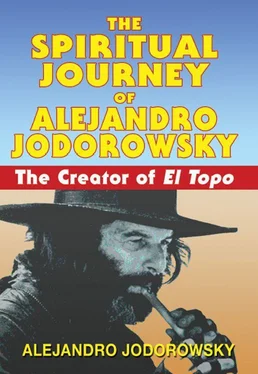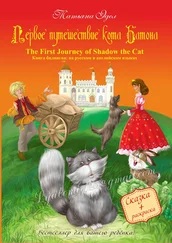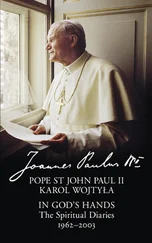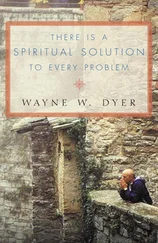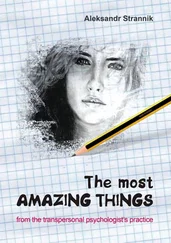You knew Leonora was home. You came to have tea — with a suspicion that it would be a terrifying experience. You washed your hands three times more than you normally do, you wondered why you were going to see this starchy, powerful woman who made you afraid. You could not decide which was more courageous: to go there or to leave without saying anything. As for me, I had already made my preparations to petrify you with respect. I savored your discomfort, which radiated an enchanting stench that would be able to make me into a goddess for a certain time. You entered into a room perfectly designed to make you feel claustrophobic so that you moved with difficulty among my traps. You realized that there was an egg stain on your coat that began to shine like the setting sun before my eyes. In despair, you wondered if your fly was open. You did not want to, but I insisted you sit on the couch, between the two Anubises in the tapestry covering it. You barely allowed yourself to cross your legs, for any other movement would have seemed an outrage. With panic, you looked at the tea and dry biscuits, for you felt you were being observed while you committed the pornographic act of drinking — and worse, eating — in my presence. At that moment an owl came down the chimney and disappeared in my bust. Your heart beat with an infinite compassion, for you suddenly understood my lamentable condition. In my own way, I asked you to deliver me, a deliverance that you alone can give me. Is it you, then, who will set chance in motion?
Although expressed in surrealist language, this description corresponds perfectly to what I was feeling at that time. If the outside of the house was like a prison, the inside was the magical extension of her mind. The painter and artist was in every piece of furniture, every object, in each of the many plants that flourished in every corner. Sitting here and there were large, delicate dolls, some of them hanging from the ceiling, swinging slowly like pendulums. The armchairs were covered with tapestries that glittered with strange symbols. The one covering the couch featured two godlike young men with dogs’ heads squatting and looking toward each other.
With an imperious gesture of her white-gloved hand, Leonora bade me sit between these two men. Then she spoke with a strong English accent. “Ejo told me that, among other things, you are a mime teacher. I want you to show me how you move. This will help me to know you better.”
At that very instant, I realized that this artist wore absolutely no jewelry — no necklace, rings, earrings, or watch. She wore no makeup, and her dress was a simple black tunic. Before such a presence that was shorn of any ornament, to engage in pantomime seemed vain, infantile, and vulgar. The idea of demonstrating some stereotypical mime technique such as carrying a weight, pulling a rope, walking against the wind, creating imaginary objects or spaces with my hands, or simply walking like a robot made me ill at ease. I had the impression of being dressed in an old, useless overcoat. Thanks to my work with koans, I was able to purify my mind by emptying it of abstractions; but I knew that I must also empty my gestures of any sort of imitation in order to arrive at a purity of movement. I undressed, and in that otherworldly space where silence nestled in the very air, I began to move with no goal. One with my body, a union of flesh and spirit inspired by Leonora’s eyes, I allowed myself to be possessed by movement. I have no idea how long it lasted — a minute, an hour? I had found the place , and I knew the ecstasy of freedom from the domination of time.
Suddenly, I fell upon the couch. Drowsily, as if waking from a deep sleep, I began to dress.
Smiling, she whispered, “Silence. Let us not disturb the mystery.” Then, walking on tiptoe in order to avoid making noise, she left and returned with two glasses of tea and some biscuits. She sipped the drink, which was sweetened with honey, then she lifted her tunic, which covered her down to her ankles, and showed me a small wound on her calf. With the teaspoon, wearing the childlike expression of a sorceress, she scraped the scab away from the wound and let the spoon fill with blood. She brought it carefully over to me without spilling a drop, emptied the red liquid into my glass, and bade me drink it. I sipped it with the same slowness and attention I had learned in the Japanese tea ceremony. Then, rummaging in an oval box, she pulled out a small pair of scissors and cut my fingernails as well as a lock of my hair. She put them all in a tiny sack that she hung around her neck.
“You will return!” she said.
For a long time, we sat in silence. It was broken by the footsteps of her two children, Gaby and Pablo. Actually, it would be more accurate to say that the silence was completed . These two children belonged fully to the strange world of this artist. There was nothing abnormal about them, but they were different — as beautiful and incomprehensible as their mother’s paintings. They each sat on one side of me, directly upon the Anubises. They showed no surprise at my presence and acted as though they had always known me. The thought occurred to me that I was their brother, for the same blood now circulated in my veins and theirs. While the children devoured the biscuits, Leonora gave me a key to the house.
As I walked down the stairs, she said from above me, as a sort of good-bye: “I am nine doors. I shall open the one on which you knock.”
That night I could not sleep. It was three o’clock in the morning, and my eyes were wide open. I was possessed. I could feel this woman in my blood, like a boat moving upstream. “Come, come,” she was saying with a voice that seemed to emerge from a distant past. I got dressed, went outside, ran though the streets until I was out of breath, and arrived at her house, opening the door silently with my key and making no noise on the stairs. From the room that served as her painting studio, I saw the flickering light of a candle and heard her voice reciting a litany. Edra, the watchdog, wagged her tail and let me pass without growling. I saw Leonora seated on a wooden throne whose back was carved with the bust of an angel. Naked except for a Jewish prayer shawl, her gaze fixed, unblinking, and focused on infinity, she seemed like a figure on the prow of a ship from an ancient civilization. She had left the world of the rational. She continued to recite in English, taking no notice of my presence. I sat on the floor, facing her. There was little left of any individuality in her. She seemed possessed simultaneously by all women who had ever existed. The words poured out of her mouth like an endless river of invisible insects. I remember a few of her verses:
I, the eye that sees nine different worlds and tells the tale of each.
I, Anuba who saw the guts of pharaoh, embalmer, outcast.
I, the lion goddess who ate the ancestors and churned them into gold in her belly.
I, the lunatic and fool, meat for worse fools than I.
I, the bitch of Sirius, landed here from the terrible hyperbole to howl at the moon.
I, the bamboo in the hand of Huang Po.
I, the queen bee in the entrails of Samson’s dead lion.
I, the tears of the archangel that melted it again.
I, the solitary joke made by the snow queen in higher mathematics.
I, the gypsy who brought the first greasy tarot from Venus.
I, the tree of wisdom whose thirteen branches lead eternally back again.
I, the eleventh commandment: Thou shalt despise no being.
I barely noticed Chiki’s arrival. He wore the same Spanish beret that was on his head day and night, and he was dressed in pajamas with vertical stripes, like a concentration camp uniform, and house shoes shaped like rabbits’ heads. I noticed that he had broad shoulders and looked Jewish (Hungarian, Russian, Lithuanian, Polish?). With the air of a well-trained dog and never acknowledging my presence, he placed his large hands on Leonora’s fragile shoulders and, with infinite tenderness, lifted her slowly and led her, step by step, into the bedroom. I could see him making her lie down on a wooden bed that was higher at the foot than at the head. Then Chiki went to lie down in another bed. Stretched out on her back, Leonora continued to murmur her interminable incantation until she drifted off to sleep.
Читать дальше
